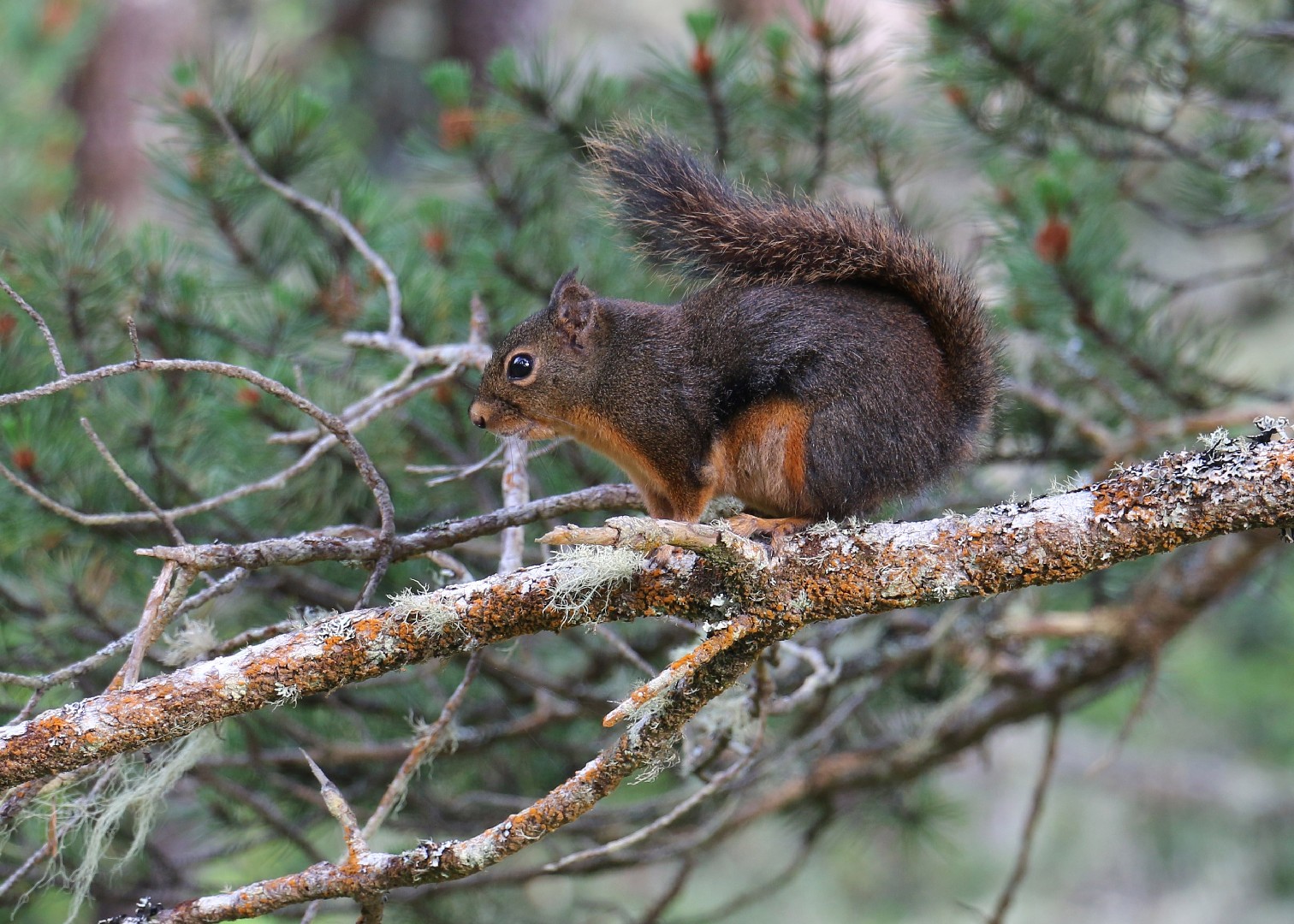Douglas squirrel
A species of Pine squirrel, Also known as Pine squirrel Scientific name : Tamiasciurus douglasii Genus : Pine squirrel
Douglas squirrel, A species of Pine squirrel
Also known as:
Pine squirrel
Scientific name: Tamiasciurus douglasii
Genus: Pine squirrel
Content
Description General Info
 Photo By https://www.flickr.com/photos/odfw/ , used under CC-BY-SA-2.0 /Cropped and compressed from original
Photo By https://www.flickr.com/photos/odfw/ , used under CC-BY-SA-2.0 /Cropped and compressed from original Description
John Muir described the Douglas squirrel, Tamiasciurus douglasii, as "by far the most interesting and influential of the California Sciuridæ". Adults are about 33 cm in length (including its tail, which is about 13 cm long), and weigh between 150 and 300 grams. Their appearance varies according to the season. In the summer, they are a grayish or almost greenish brown on their backs, and pale orange on the chest and belly, while legs and feet appear brown. In the winter, the coat is browner and the underside is grayer; also, the ears appear even tuftier than they do in summer. Like many squirrels, Douglas squirrels have a white eye ring. Mating can occur as early as February. Gestation is about four weeks, and the young (which are altricial) are weaned at about eight weeks of age. There may be up to six kits in a litter, though four is more usual. In the southern and lower parts of their range they produce two litters each year. 
General Info
Lifespan
6-10 years
Diet
Douglas squirrel is predominantly a herbivore, relishing forest vegetation including lichens, fungi, green plants, flowers, and berries. Its favored food comprises seeds, particularly conifer cones, often creating specialized 'middens' for their conifer seed storage.
Appearance
Douglas squirrel is a small, robust rodent. It possesses thick fur that is primarily a rich, rusty red-brown color, with a lighter underbelly. The tail is large and bushy, distinguished by distinctly banded patterns of black and grayish-white. There are no significant variations in appearance due to age, gender, or subspecies. Overall, the douglas squirrel is characteristically agile, known for its swift, squirrel-like movements.
Behavior
Douglas squirrel is a solitary and territorial animal, using vocalizations, chases, and scent marks to defend its territory. This arboreal species predominately forages on seeds, nuts, and fruits but also consumes insects. Notably, douglas squirrel exhibits hoarding behavior; it caches food supplies ensuring survival during sparse winter periods.
Population
Stable

 Photo By https://www.flickr.com/photos/odfw/ , used under CC-BY-SA-2.0 /Cropped and compressed from original
Photo By https://www.flickr.com/photos/odfw/ , used under CC-BY-SA-2.0 /Cropped and compressed from original Scientific Classification
Phylum
Chordates Class
Mammals Order
Gnawing mammals Family
Squirrels Genus
Pine squirrel Species
Douglas squirrel